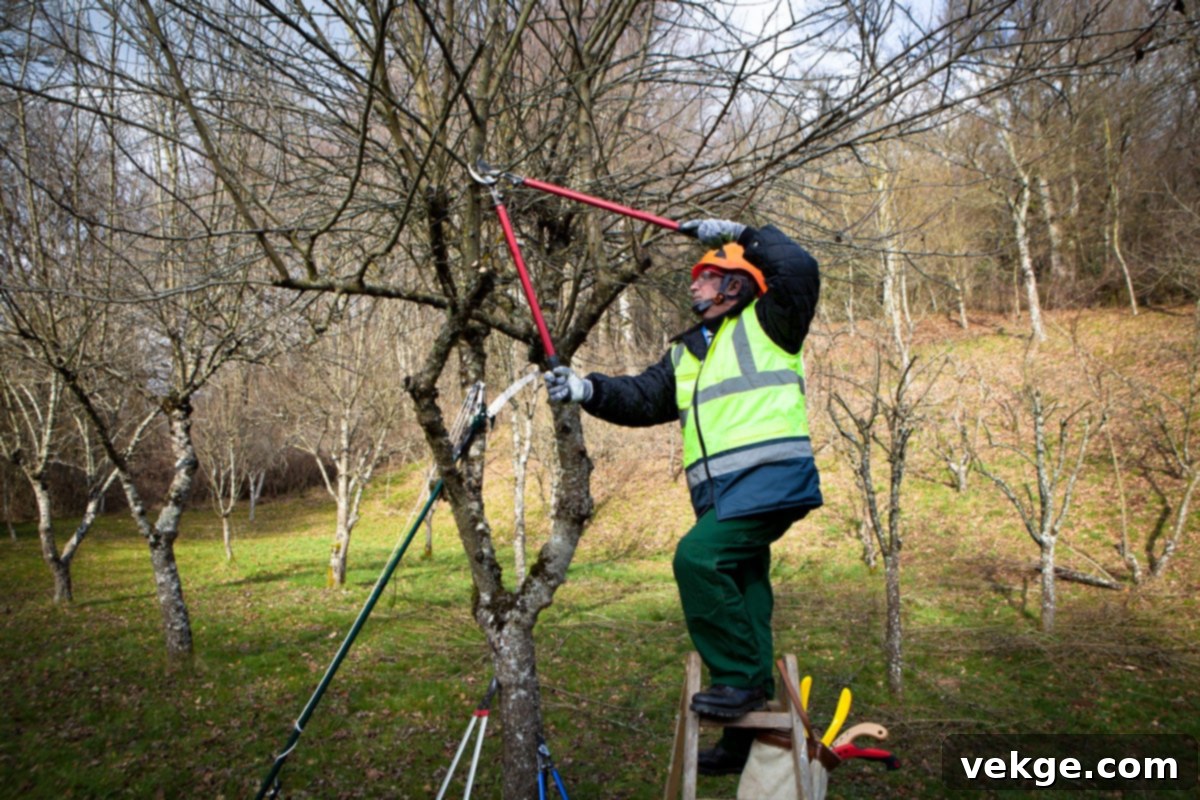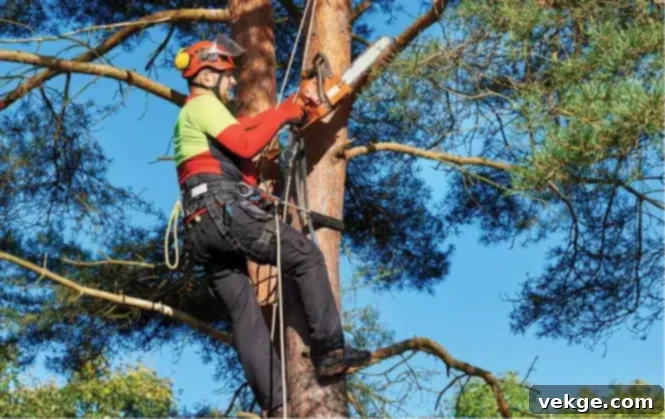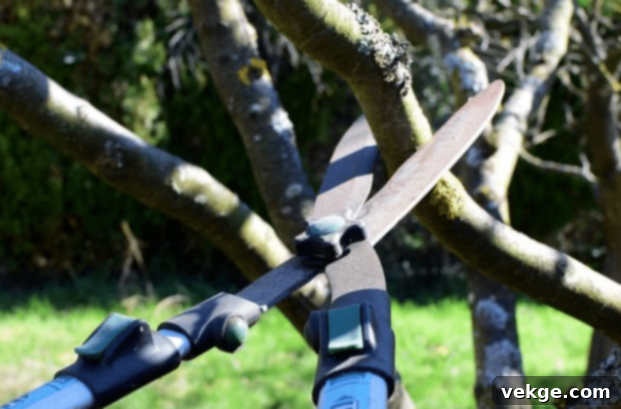Optimal Tree Trimming in Missouri: Why Winter Dormant Pruning is Key for Tree Health
Effective tree trimming is an art and a science, especially in a diverse climate like Missouri’s. The timing of pruning can significantly impact a tree’s health, growth, and longevity. While it might seem counter-intuitive to prune when nature seems to be resting, experts universally recommend trimming trees when they are in their dormant state, typically from late autumn through early spring. This specific window is crucial for encouraging robust growth, preventing disease, and ensuring the structural integrity of your trees for years to come.
Pruning outside of this recommended dormant period, particularly during active growth seasons, can lead to unnecessary stress, weakened trees, and increased susceptibility to pests and diseases. Understanding the nuances of tree care, including the ideal timing for trimming, can be complex due to variables such as the specific tree type, current weather conditions, and the overall health of individual branches. For homeowners seeking peace of mind and the best possible care for their landscape, reaching out to a qualified and experienced tree service is paramount. Companies like Trufast Tree Service possess the extensive knowledge, specialized tools, and skilled personnel required to provide precision care to trees of every size and condition.
Trufast Tree Service is committed to enhancing the health and beauty of trees across the Springfield, MO area. Their team prioritizes safety and the long-term vitality of your landscape, ensuring your trees thrive throughout the year. For professional advice or to schedule a service, you can reach them at:
- Address: 4386 N Farm Rd 159, Springfield, MO 65803
- Phone: (417) 413-4729
- Website: https://www.trufasttreeservice.com/
Professional tree care teams are equipped with an in-depth understanding of arboriculture, allowing them to provide meticulous attention to your trees. They not only ensure the safety of your property during trimming but also promote the natural resilience and aesthetic appeal of your trees and shrubs, leading to a healthier and more vibrant outdoor space.
The Logic Behind Winter Dormant Tree Pruning in Missouri

While the idea of trimming trees during the cold winter months might seem counter-intuitive to some, it is, in fact, one of the most beneficial practices for encouraging strong, healthy growth. Skilled arborists and tree service teams across Missouri advocate for this approach, explaining that winter dormant pruning sets the stage for a truly spectacular display of foliage and bloom in the late spring and summer months.
According to experts, the period from roughly November to March, when trees are in their dormant state, is the ideal time for major pruning and significant structural modifications. During this phase, trees are not actively growing, meaning their energy reserves are stored in their roots and woody tissues, not actively flowing to leaves or new shoots. This routine maintenance, performed when the tree’s metabolic activity is at its lowest, allows for more dramatic and impactful trimming, which trees can readily withstand and recover from with minimal stress.
The primary objective of dormant pruning is to reinvigorate the overall health, structural integrity, and aesthetic beauty of your trees. By strategically removing specific parts of the tree, you are not only promoting better health but also meticulously manicuring your garden’s landscaping for an appealing and well-prepared spring presentation. Dormant pruning is essentially a corrective and preventative action designed to accomplish several key goals:
- Remove Dead, Dying, or Diseased Branches: Eliminating compromised wood prevents the spread of decay and disease to healthy parts of the tree and removes potential safety hazards.
- Shape Overgrowth and Improve Structure: Thoughtful pruning guides the tree’s growth, creates a balanced canopy, improves air circulation, and allows light penetration, all of which contribute to the tree’s ability to flourish when coming out of dormancy.
- Restore Suffering Trees: Proper pruning techniques can revitalize trees that are struggling, redirecting energy to stronger, healthier limbs and promoting new, vigorous growth.
For the best results and to ensure optimum safety, it is highly recommended that pruning and trimming be handled by a knowledgeable and experienced tree service. Their expertise encourages a thriving tree lifespan and guarantees the work is performed safely and effectively. To learn more about the essential reasons behind regular tree trimming, you can find additional resources here. When you choose to trim your trees in the winter, you can anticipate a wealth of benefits for your trees and shrubs.
Significantly Reduced Tree Stress
One of the most compelling advantages of pruning and trimming in the winter is the profound reduction in stress experienced by the trees. During other seasons, particularly spring and summer, trees are in a state of active growth, expending significant energy on producing leaves, flowers, and fruit. Pruning during these peak periods can be highly stressful. It forces the tree to redirect vital energy that would otherwise be used for growth and repair towards healing pruning wounds, often resulting in excessive sap loss, which can further weaken the tree.
The trimming process during active growth can also potentially stimulate new, tender growth that may not have sufficient time to harden off before the onset of cold temperatures, leaving it vulnerable to frost damage. Winter, however, provides an ideal window for pruning and trimming because the trees are truly dormant. Their metabolic processes have slowed, and there is no risk of stimulating new, untimely growth. In this quiescent state, trees are remarkably resilient and can withstand extensive trimming, reshaping, and the removal of branches with minimal physiological impact. This allows them to allocate all their energy to healing the pruning cuts and storing reserves, preparing for a strong burst of growth when spring arrives.
Dormancy is a tree’s natural defense mechanism, a period when it intuitively knows to prepare for potential water and nutrient shortages, protect its delicate tissues from freezing temperatures, and brace itself for dry weather conditions. During this time, the tree conserves its energy, effectively pausing the growth process until the warmth of spring signals the time to reawaken. This natural biological rhythm makes winter the optimal time for intervention, ensuring the tree’s energy is used for recovery and future vigor rather than fighting off stress.
Achieving More Favorable and Effective Results

The outcomes from pruning trees in the winter are consistently more favorable, both for the tree’s health and the arborist’s efficiency. With deciduous trees having shed their leaves, the canopy is bare, offering an unobstructed view of the tree’s complete structure. This clear visibility provides arborists with far better insight into the ideal areas for pruning, allowing for more precise cuts that respect and maintain the tree’s natural integrity and long-term health. It becomes much easier to identify problematic branches that might otherwise be hidden by dense foliage.
Diseased, damaged, or vulnerable branches are prominently visible and easily accessible when there are no leaves to obscure them, making the assessment and removal process significantly more effective. Furthermore, trees often send a considerable amount of vital nutrients to dead or damaged limbs in a fruitless attempt to restore them. By removing these compromised sections during dormancy, those precious nutrients are immediately redirected to the healthy, living areas of the tree. This redirection of resources is critical, allowing the tree to use its energy more efficiently for robust growth and overall health, significantly increasing its chances for a thriving and extended life.
Enhanced Protection Against Pests and Disease
The emergence and activity of pests and diseases can significantly impact the timing and success of pruning. Fortunately, most common tree pests and disease-causing fungi or bacteria are also dormant or less active during the colder winter months. This natural slowdown makes winter an ideal time for working on tree health, as the risk of infection or infestation through fresh pruning wounds is substantially reduced. With bare trees, any damaged or diseased wood is glaringly apparent, making identification and removal more straightforward and effective.
For some tree species, winter pruning is not just ideal but essential for this specific reason. Oak trees, prevalent in Missouri, are a prime example. They are particularly susceptible to diseases like oak wilt and infestations by beetles that can be detrimental to the tree’s overall health and even cause mortality. Pruning oak trees in the spring or summer leaves open wounds that can attract these harmful pests and disease spores, making the tree highly vulnerable. Winter trimming significantly reduces this risk by limiting the presence of pathogens and vectors, allowing wounds to begin healing before the peak activity periods of pests and diseases.
Moreover, as trees age, their limbs can naturally grow weak, become diseased, or suffer damage from environmental factors. Refraining from removing these compromised branches poses a significant safety risk, as they are far more prone to falling, especially during severe weather conditions like heavy winds or ice storms. It is crucial to remove these hazards as soon as they are noticed. Neglecting to do so not only presents a danger to property and people but also allows damage and disease to potentially spread to the healthy areas of the tree, compromising its entire structure and vitality. Professional dormant pruning helps mitigate these risks, ensuring both tree health and property safety.
Enhancing the Overall Landscape Aesthetics

The bare branches of trees in winter offer a unique advantage: a clear, unobstructed visual of their fundamental shape and structure. This provides the perfect opportunity to trim overgrowth, remove errant branches, and sculpt an appealing form that will enhance your spring and summer landscape. Without leaves to obscure the view, arborists can make more informed decisions about where to cut, ensuring the tree develops a strong, balanced, and aesthetically pleasing canopy.
Strategic pruning allows you to either constrain growth where it might interfere with structures like your house, foundation, or walkways, or to encourage growth in a specific direction for a desired effect. Winter is an exceptionally opportune time to work on the garden’s trees because there’s minimal risk of disturbing other plant life. Most perennials are dormant, annuals have withered, and shrubs have lost their foliage, making the workspace much clearer and less prone to accidental damage. This focused approach on trees ensures they receive undivided attention.
Winter gardening is inherently more straightforward since the primary focus can be solely on transforming the trees. In the warmer months, the entire landscape often demands attention – planting, weeding, watering – and as a result, trees can sometimes take a backseat. Addressing major tree care needs during winter frees up your time and energy for other gardening tasks when spring arrives. One particularly important aspect to remember is that a younger tree that receives adequate and proper pruning early in life will establish a stronger structure and require significantly less corrective or restorative pruning as it ages. This proactive approach ensures long-term health and reduces future maintenance efforts.
Promoting Stronger, Healthier Growth in the Spring
When trees receive meticulous care during the winter, including adequate trimming and pruning, they are optimally prepared to present at their healthiest in the spring, ready for a vigorous burst of new growth. By removing dead, diseased, or poorly structured branches during dormancy, the tree can dedicate its full energy to producing strong, healthy new shoots and foliage when the growing season begins. This proactive maintenance gives your trees a significant head start, ensuring they are well-positioned for an entire season of vibrant growth.
The likelihood of a tree enjoying a healthy and extended life is significantly increased when it is consistently trimmed and properly maintained. Many homeowners wisely choose to reach out to professional tree services for their specialized knowledge and expertise. These experts understand the intricate needs of different tree species and can apply the most effective pruning techniques to promote long-term vitality. Well-cared-for trees are inherently stronger and more resilient, better equipped to withstand the inevitable abuse from harsh weather conditions typical in Missouri, whether it’s significant accumulations of snow and ice, powerful gusts of high winds, or heavy storms. Their robust structure minimizes the risk of damage, making them safer and more enduring features of your landscape.
Planting trees and nurturing them to thrive into maturity is a time and maintenance-intensive endeavor, requiring patience, consistent effort, and a considerable amount of energy. Ideally, homeowners will work diligently to preserve and enhance the trees they plant from the ground up, as cutting down mature trees is a major undertaking that is both costly and labor-intensive. It is undoubtedly in your best interest to learn essential maintenance techniques for your trees or, even better, to research and engage a reputable, quality professional tree service. Such experts can provide the necessary care to keep your trees strong, growing vibrantly, and lasting for generations.
A dedicated team of tree experts can significantly relieve your stress by establishing and executing proper tree maintenance plans. They assure that all pruning and trimming are performed with precision, care, and accuracy, allowing you to realize a stunning, healthy landscape when spring arrives. Professional tree trimming is not just about aesthetics; it is an essential investment in ensuring healthy, vigorous growth now and well into the future.
Final Thought: Embrace Winter for Optimal Tree Health
When considering trimming or pruning trees within your Missouri landscape, expert tree services consistently encourage that this critical process be performed when the trees are in their dormant state, meaning they are not actively growing. This beneficial window typically spans from the depths of winter through early spring, aligning perfectly with the tree’s natural resting period. Understanding and adhering to this timing is a cornerstone of responsible tree care and a key factor in ensuring the long-term health and beauty of your arboreal assets.
Because trees are dormant during this period, they are far more tolerant of extensive trimming and more significant structural work. Their reduced metabolic activity means they experience less stress and can allocate their energy more efficiently to heal pruning wounds, setting the stage for robust growth when the warmer weather returns. This strategic timing not only minimizes risks but also maximizes the positive impact of each cut.
Professional tree services like Trufast Tree Service are dedicated to ensuring that each tree in your landscape is in its best possible condition upon completion of their work. They bring unparalleled expertise, specialized equipment, and a commitment to safety to every project. If you have any questions or concerns about your trees, or if you’re considering a pruning project, we strongly recommend reaching out for a consultation with an expert team. Addressing your concerns with professionals before committing to a service will provide clarity and confidence. Remember, your priority, and theirs, is for your trees to lead a long, healthy, and vibrant life, contributing beauty and value to your property for many years to come.
